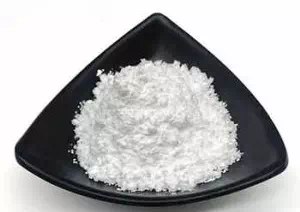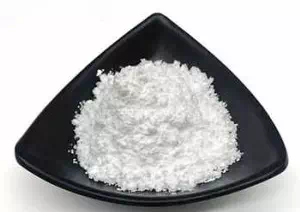All Categories



ethyltriphenylphosphonium bromide CAS 1530-32-1, ethyltriphenylphosphonium bromide, CAS 1530-32-1
In the vast field of chemistry, there is a substance that has attracted much attention - ethyltriphenylphosphorus bromide. It also has another name of the same kind, also known as ethyltriphenylphosphorus bromide. This substance appears as a white to grayish-white solid in appearance.
CAS : 1530-32-1
Formula : C20H20BrP
Mol. wt. : 371.25
EINECS : 216-223-3
Chemical Name | Ethyltriphenylphosphonium Bromide |
Other Name | Ethyl triphenyl phosphine bromide |
CAS | 1530-32-1 |
EINECS | 216-223-3 |
Type | Quaternary ammonium salt; Pharmaceutical raw materials; Organic raw materials |
Molecular Formula | C20H20BrP |
Molecular Weight | 371.25 |

Melting point | 203-205 °C(lit.) |
Boiling point | 240℃[at 101 325 Pa] |
density | 1.38[at 20℃] |
vapor pressure | 0-0.1Pa at 20-25℃ |
Fp | 200 °C |
storage temp. | Inert atmosphere,Room Temperature |
solubility | 174g/l soluble |
form | Crystalline Powder |
color | White to off-white |
Water Solubility | 120 g/L (23 ºC) |
Sensitive | Hygroscopic |
In the vast field of chemistry, there is a substance that has attracted much attention - ethyltriphenylphosphorus bromide. It also has another name of the same kind, also known as ethyltriphenylphosphorus bromide. This substance appears as a white to grayish-white solid in appearance. From the perspective of chemical classification, it belongs to a kind of quaternary phosphate salt product with great development potential.
Among numerous chemical application scenarios, ethyltriphenylphosphorus bromide plays a crucial role, and its primary use is as a catalyst. In the complex and precise field of organic synthesis, the role of catalysts cannot be underestimated. They can alter the rate of chemical reactions, enabling them to proceed more efficiently and smoothly. And ethyltriphenylphosphorus bromide is like a "behind-the-scenes hero" who makes silent contributions, playing a crucial catalytic role in the organic synthesis process.
It is worth mentioning that during the specific chemical reaction process of Wittig alkylation, ethyltriphenylphosphine bromide generates a special substance - the "unstable" ethyltriphenylphosphine phosphate. This reaction process involves a series of complex chemical changes, and the generated ethyltriphenylphosphine phosphate has a certain degree of instability due to its own characteristics. This instability also brings unique challenges and opportunities to related chemical research and practical applications, attracting numerous chemical researchers to conduct in-depth exploration and research on it.

Ethyltriphenylphosphine bromide (ETPB), as a phase transfer catalyst of significant importance in the field of chemistry, plays a key role in accelerating the reaction process in numerous chemical reaction systems. During the curing process of phenolic epoxy resin, it can effectively reduce the activation energy of the reaction, promoting a faster cross-linking reaction between resin molecules, thereby accelerating the curing speed of phenolic epoxy resin, enabling it to reach the ideal curing state in a short time and enhancing the performance and stability of the material. For some fluororubber resins, ethyltriphenylphosphine bromide also demonstrates outstanding catalytic performance. It can precisely guide the intermolecular reactions of fluororubber resins, optimize the reaction path, accelerate the curing reaction, and ensure that fluororubber resins can efficiently form high-molecular structures with specific properties during the preparation process. In the curing of thermosetting powder coatings, it is an indispensable catalyst. By promoting the chemical reaction of the active components in the coating, it enables the powder coating to rapidly cure and form a film under suitable conditions, thereby enhancing the performance indicators of the coating such as hardness, wear resistance and corrosion resistance.
In addition to its outstanding performance in the field of material curing, ethyltriphenylphosphine bromide can also be used as a catalyst for the synthesis of certain organic compounds. In complex organic synthesis reactions, it can provide suitable reaction pathways and energy environments for the reactions, enabling originally difficult-to-carry chemical reactions to proceed smoothly and enhancing the yield and selectivity of the target products. Meanwhile, it is also an important component of pharmaceutical intermediates and has extensive applications in the field of pharmaceutical synthesis. By participating in various organic synthesis reactions, it can help construct the molecular framework of pharmaceuticals with specific structures and functions, providing strong support for the research and development and production of new drugs.
A series of complex and meaningful organic synthesis reactions can be carried out using ethyltriphenylphosphine bromide as the raw material. For instance, during the aldehyde-alcohol reaction process, ethyltriphenylphosphine bromide can interact with the reactants, influencing the reaction rate and direction, and promoting the reaction to proceed along the expected path, laying the foundation for subsequent reaction steps. Then, in the Hona-Wordswars-Emmons alkylation reaction, it continues to play its unique catalytic role, precisely controlling the progress of the reaction and ensuring its accuracy and efficiency. In the process of synthesizing thiazolidane D-amino acids using L-cysteine and leiodolactone a as raw materials, the participation of ethyltriphenylphosphine bromide enables each reaction step to be closely connected, improving the synthesis efficiency and the quality of the product.
In addition, ethyltriphenylphosphine bromide can also be used to prepare cycloindole through a dienantioselective intramolecular methylene reaction. During this process, it can ingeniously regulate the chemical reactions within molecules, making the reactions highly stereoselective, thereby precisely synthesizing cyclic indole compounds with specific structures, providing new ideas and methods for the research and application of organic synthesis chemistry.
Meanwhile, it is also used as a reagent for the solid-state metathesis condensation reaction of alkyl dienyl thiophene monomers. In this reaction, ethyltriphenylphosphine bromide can fully contact and exert its effect with the reactants, promoting the generation of alkyl dienyl thiophene monomers and providing important raw material support for the synthesis of related materials.
It is worth mentioning that ethyltriphenylphosphine bromide is also involved in important organic reaction processes such as the Mizoroki Heck cyclization reaction and the cascade Tsuji Trust cyclization reaction. Among these reactions, it provides a crucial guarantee for the successful progress of the reactions with its unique chemical properties and catalytic effect, promoting research and development in the field of organic chemistry.
* Prompt reply and 24 hours online, professional team to provide best price and high quality product.
* Sample testing support.
* Every batch of products will be tested to ensureits quality.
*The packing also can be according the customers` requirment.
*Any inquiries will be replied within 24 hours.
*we provide Commerical Invoice, Packing List, Bill of loading, COA , Health certificate and Origin certificate. If your markets have any special requirements, let us know.